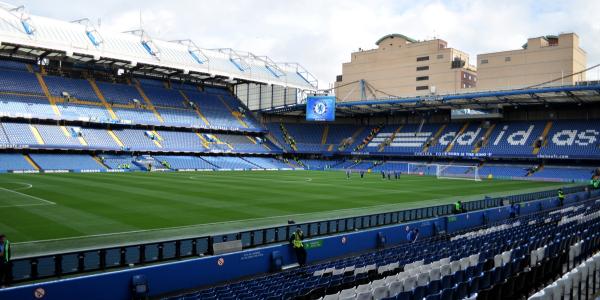Stamford Bridge

Key facts
Club: Chelsea FC | Opening: 1877 | Capacity: 41,837 seatsHistory and description
Stamford Bridge officially opened on the 28th of April 1877, but for the next 28 years mainly served as an athletics venue.The owners, however, wanted a stadium that could host professional football, and hired architect Archibald Leitch to design a new stadium. Stamford Bridge got almost completely rebuilt in 1905, and was subsequently offered to Fulham FC. Fulham turned the offer down though, and newly formed Chelsea FC moved in instead.
Stamford Bridge at that time consisted of one covered seating stand and a vast open bowl of terraces covering the other three sides. An estimated 100,000 people could fit into the stadium.
Few changes were made until 1930, when new terraces were built at the Shed End, and, nine years later, when a small seating stand was built at the North End.
Stamford Bridge recorded its highest attendance in 1935 during a match against Arsenal when a total of 82,905 fans attended the match.
In 1965, the terraces of the West Stand were replaced by a new covered seating stand. Redevelopments continued in the mid 1970s when the old main stand was demolished and replaced by the new East Stand.
The construction of the new East Stand turned out to have such an effect on Chelsea’s finances though, that the club was almost forced into bankruptcy. The Stamford Bridge site was sold to property developers in order to pay off some debts, which almost resulted in Chelsea being evicted and forced to ground share with Fulham or QPR.
The club finally won back ownership in 1992, however no changes were made in the years in between. In the meantime, the Taylor report had been published and Stamford Bridge was in urgent need for redevelopment.
Works started in 1994 with the demolition of the North terraces, which were replaced with a new seating stand. Soon after, the Shed End terraces suffered the same fate.
Reconstruction of the West Stand started in 1997 and was, with some delays, completed in 2001. At the same time the East Stand had undergone an extensive refurbishment.
Capacity has remained rather limited though, and Chelsea therefore has the ambition to either expand Stamford Bridge, or move to a complete new stadium. As the stadium lies hemmed in by housing, a possible expansion will be difficult and expensive, and the club has therefore been exploring possible sites in West London for a new stadium. The club recently expressed interest in the Battersea Power Station site, but their bid failed.
Tidak ada komentar:
Posting Komentar